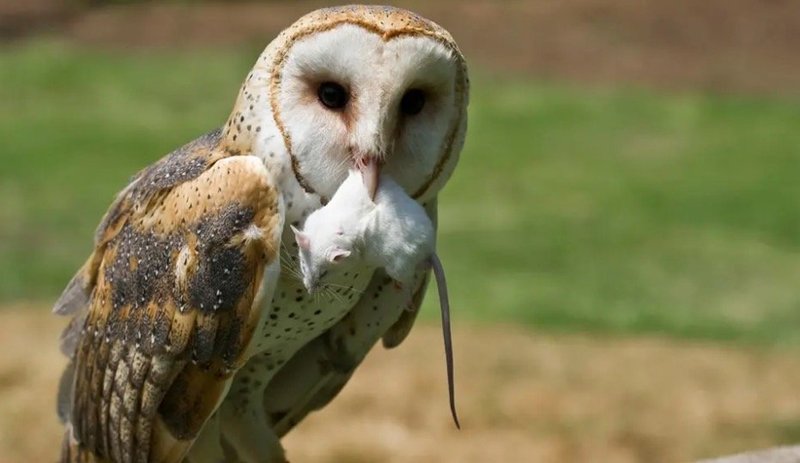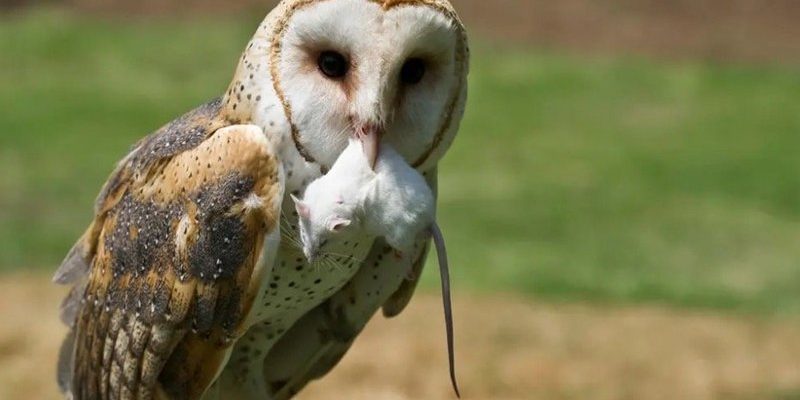
Barn owls are incredible hunters, preying on small mammals, insects, and even birds. Their diet can vary a bit depending on where they live, much like how our meals change based on the season or what’s available in the fridge. In this article, we’ll dive into the barn owl’s dining preferences and their remarkable hunting techniques, helping you appreciate these silent predators just a little bit more.
What Do Barn Owls Eat?
Barn owls are primarily mammal eaters, with a strong preference for small rodents. This includes creatures like:
- Field mice
- Shrews
- Voles
- Rats
These little furballs make up about 90% of their diet. Barn owls are excellent at finding their prey at night, thanks to their incredible hearing. Their ears are asymmetrical, allowing them to pinpoint the sound of a scurrying mouse even in total darkness. It’s almost like having built-in night vision combined with a superpower for sound!
You might be wondering whether they ever switch things up. Well, yes! If rodents are scarce, barn owls will snack on insects like grasshoppers, moths, and beetles. They may even catch small birds or rabbits if they come across them. So, while their favorite meal is a mouse, they’re not picky eaters, which is a smart survival tactic.
How Do Barn Owls Hunt?
The way barn owls hunt is truly impressive. They are nocturnal, meaning most of their hunting takes place after sunset. As the sun sets, they take to the skies, gliding silently thanks to their soft flight feathers. This is a little like sneaking up on someone at a surprise party—silent and stealthy!
Barn owls rely on a mix of vision and hearing. Their large eyes help them see well in low light, but it’s their ears that truly give them an edge. They can detect the slightest sounds of rustling leaves or squeaking mice. When they find their target, they swoop down quickly, often without making a sound. It’s a blend of grace and precision that’s hard to beat.
It’s also interesting to note that barn owls can hunt from diverse perches, like trees, barns, or even fences. They scan their surroundings for potential meals, adapting their hunting locations based on the environment. This flexibility is key to their success as predators.
The Role of Location in Foraging
Where barn owls hunt can make all the difference in their success rate. They prefer open habitats, like fields, grasslands, and farmlands, where they can easily spot their prey. Think of it like choosing a restaurant based on the menu: a place with more options typically yields better results.
Barn owls also thrive in areas with a healthy supply of rodents. This is why you’ll often find them near agricultural fields, where crops attract critters. They’ll nest in old barns, tree cavities, or even man-made boxes placed by enthusiasts. Nesting sites are crucial as they need a safe place to raise their young while ensuring a steady food supply nearby.
Interestingly, if you’ve ever wondered whether barn owls hunt in urban areas, the answer is yes! They can adapt to cities, hunting in parks and even along roadside areas where rodents are found. Their ability to thrive in varied environments is a testament to their resilience.
Hunting Strategies of the Barn Owl
Barn owls use several clever strategies to catch their prey. One of the most effective is known as “listening and locating.” As mentioned earlier, their unique ear structure helps them triangulate sounds. When they hear a noise, they tilt their heads to zero in on the source. Imagine trying to find a friend in a crowded room just by listening to their voice—this is what barn owls do, but in total darkness!
Once they have pinpointed their target, they employ a surprise attack. They’ll often swoop in from above, using their sharp talons to grab their dinner mid-run. This swift strategy minimizes the chances of escape for their prey. It’s like a whirlwind of feathers and speed that leaves the hunted little chance to get away.
After capturing their meal, barn owls can swallow their prey whole if it’s small enough. They have a unique way of digesting their food, as they later regurgitate pellets that contain bones and fur. This pellet casting is an interesting fact about these owls—it’s almost like nature’s way of recycling!
Why Barn Owls Are Important to Their Ecosystem
Barn owls play a vital role in controlling populations of rodents and insects. By keeping these populations in check, they help maintain a balanced ecosystem. Think about it: if there were too many mice running around, they could cause damage to crops and spread diseases. Barn owls help prevent these problems, acting like nature’s pest control experts.
Their presence also indicates a healthy environment. A thriving barn owl population suggests that there’s an ample food supply and good habitat conditions. Farmers and landowners benefit from having these birds around, as they naturally limit pest populations without the need for harmful chemicals.
Plus, watching a barn owl hunt can be a breathtaking experience. It’s a reminder of the beauty of nature and the intricate relationships between species. As humans, we have a responsibility to protect these habitats so that barn owls can continue to flourish.
In a nutshell, barn owls are remarkable creatures with fascinating lifestyles. They primarily eat small mammals like mice and adapt their diets based on availability. Their hunting skills are top-notch, relying on silent flight and acute hearing to stalk their prey. By thriving in various habitats and maintaining ecosystem balance, they’re truly guardians of the night.
Next time you hear the eerie call of a barn owl (or maybe come across a pellet), you’ll have a deeper appreciation for how these birds navigate their world. Their hunting methods and dietary habits are as captivating as they are essential, making them a vital part of the natural landscape. So, whether you’re in the countryside or a bustling city, take a moment to look up and appreciate these silent hunters.

